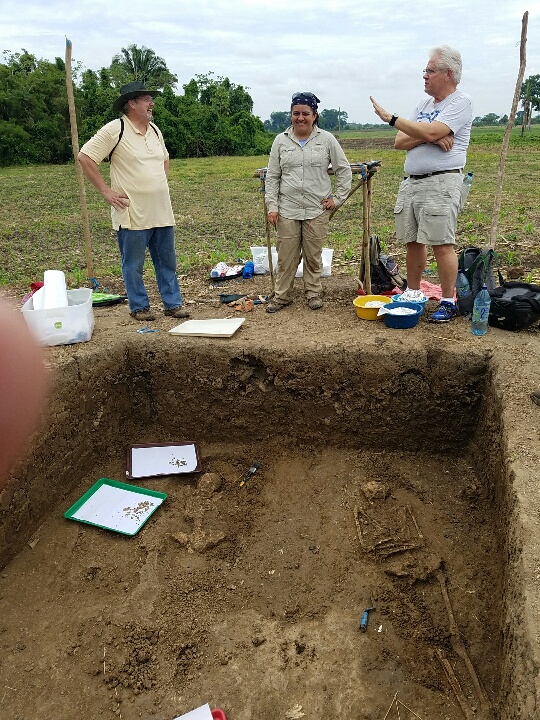2017 Expedition
In May of 2017 a group of seven flew to the Yucatan of Mexico, then drove down through Belize and into Guatemala to further the ongoing project of Book of Mormon archaeology. The team was looking to visit sites they had been researching concerning the powers behind the beheading of King Anti-Nephi-Lehi. The research guided the team to the Guatemala sites of Seibal, Dos Pilas, Cancuen, Altar de Sacrificios, Aguateca and Naranjo.
The team first visited Seibal where they were introduced to a theme for the area--defensive measures taken by the inhabitants of the cities to protect themselves from invading forces. There were defensive walls built nearly fifty feet tall at Seibal and it ran for about 100 meters. Next to this wall was a stela of a zoomorphic man with a monkey head. We know that there are Mayan references to Captain Moroni as Captain Kan Tok, and also as Red Monkey. It appears that due to the position of this stela, this "monkey" may be an allusion to our Captain Moroni who worked tirelessly to fortify the Nephite cities along the Lamanite borders.
A day later the crew ventured south where they encountered the Hermounts before they turned east and then north to visit the site of Cancuen. Here they found an excavated "cistern" or ritual bath where the bodies of 31 members of royalty were buried after they had been murdered and laid in this makeshift grave with a sense of honor. Ironically, this grave was at the foot of a temple that contained architectural features very similar to Caana (Sky Place) at Caracol. The teaching panels in mural rooms, the stairway counts to upper levels and the highest point capped with three temples to allude to the glories of afterlife are found here at Cancuen. And, when it is the rainy season, the city of Cancuen no longer sits on an oxbow, but it becomes an island--a unique defensive measure indeed.
The team then visited Dos Pilas the next day. It was a very hot day in the jungle of the Peten, and it tested our ability to ration water and conserve our strength. But, the payoff was so worth it. There were several stelae found here at Dos Pilas that refer to shielding, or protecting. The principle plaza has four large stelae that oppose the glyph writings on the hieroglyphic stairways. This positioning is critical because the hieroglyphic stairways recite how the king of Dos Pilas took control of Tikal with lots of blood shed and heads removed. These images on the stelae in the plaza stood to oppose this action recorded on the stairways. They hold spears and shields to oppose this action. Then, about a kilometer to the east we found two stelae that hold images of Quetzal priests who hold shields and are being asked to protect those "fish" who have just been harvested. We suspect that these two stelae are a reference to the meeting of Alma and the Sons of Mosiah when the converted Lamanites are asking entrance into the land of Zarahemla for protection. And, it is at the right location for this to take place.
We spent the next day researching Altar de Sacrificios where we met a wonderful Guatemalan Site Director who was gracious enough to share her mosquitoes with us while she suggested another site to visit. Based on her suggestion we visited Aguateca. This is a sister city site to Dos Pilas and it contained the features of a converted Lamanite city. Temples with specific numbered steps and doorways; rooms for mural teaching, and directional orientation that aligned with life/death and light/darkness. It appears that the defensed city of Aguateca was a gathering of the converted Lamanites from Dos Pilas. Their leader was a daughter of the ruler of Dos Pilas and her name was "Lady Six Sky." She relocated a group of followers to revitalize the city of Naranjo. We feel certain that this "daughter" is actually a symbol of the church (bride) who had received the gospel message of a coming Messiah and were "fertile" with the fruits of the Spirit.
This year's expedition yielded information that helps flesh-out the unknown aspects of the history pertaining to the converted Lamanites, the commercial connections that bonded the Lamanites with the Kings-men (Mulekites) and created this strange social mix that we find in the Book of Mormon.




